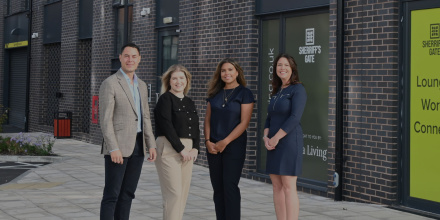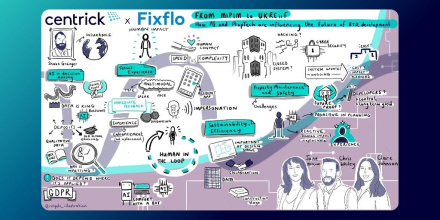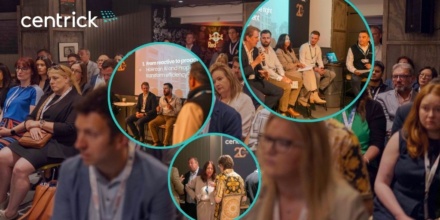In the ever-evolving landscape of real estate, the build-to-rent (BTR) sector stands out as a modern solution to contemporary housing needs. But what exactly is BTR, and how does it intersect with broader societal trends, such as the Happiness Curve?
What Is BTR?
The build-to-rent (BTR) sector is a real estate development model where purpose-built residential properties are constructed specifically for rental purposes rather than for sale. In this model, developers either stand-alone or in conjunction with investment funds, REIT’s or broader institutions, design and build entire communities or apartment complexes with the intention of renting out units to tenants on a long-term basis. For many that have either been involved with the rental sector or have been rental residents themselves this model and particularly the growth of this model may come with huge positive sentiment. Unlike the Private Rental Sector where large and very often small landlords manage individual or “portfolios” of units with very little control over the facilities or communities within their buildings, BTR – when operated well – presents a huge opportunity to improve the amenities, community and quality of life of renters and that must be a standard that property professionals and rental residents are aiming for, together.
We’re perhaps all familiar with the now expected features within many build-to-rent developments, with many including amenities tailored to renters’ needs, such as communal spaces, gyms, co-working areas, and shared social facilities. Amenities and benefits created and curated by many BTR developments can and often do contribute to a sense of community that is not always offered in pure PRS developments. It’s worth noting though that amenities alone do not create or nurture a sense of community. High performing, low attrition communities are created when residents have shared experiences, ongoing communication, mutual services and a real sense of shared belonging – especially when managed effectively via resident engagement teams.
There’s no escaping the growth of BTR globally and in the UK, both in major and growing cities the sector has gained significant traction as changing attitudes towards homeownership combined with a changing mortgage landscape have increased demand for rental housing options tailored to modern lifestyles.
As the opinions and behaviors of rental residents and would be “homeowners” continue to change and evolve the challenge for BTR operators looking ahead must be not just “what to build” or “where to build” or even “what amenities are needed” but rather how to stand out in an increasingly crowded market. So we’re lifting the lid on some of the real feedback from residents in the rental sector, both BTR and PRS, and just what the happiness curve could mean for BTR developers, operators and residents.
What Is The Happiness Curve?
Scholars have uncovered growing evidence suggesting that happiness throughout adulthood follows a U-shaped pattern – with life satisfaction declining in our 20s and 30s, reaching a low point in our late 40s, then rising again until our 80s. In 2010, The Economist published an article asserting that happiness over the course of life resembles a “U-bend”: peaking in youth, dipping in midlife, and then rebounding. This idea has been widely discussed in media outlets and explored in a recent book titled “The Happiness Curve: Why Life Improves After 50.” Many economists interpret this supposed U-shaped trend in happiness as indicative of a midlife trough, often referred to as a midlife crisis, as individuals progress through different stages of life.
How Is BTR Related To The Happiness Curve?
The Love Where You Live research, delivered in February 2024, shows that there is a clear correlation between tenant satisfaction in the rental sector and the so-called Happiness Curve. The research shows a clear dip in tenant satisfaction based on age group – although the research shows that this is most likely to happen between the ages of 25 and 34 as opposed to in your 40’s.
20% of respondents in this 25 to 34 year old age bracket claimed they were dissatisfied to some extent with their current value of living in their rental property, which exceeds the level of dissatisfaction of older age groups, who seemed to be generally more satisfied. Just 14% of those aged 35 to 44 expressed the same sentiment, which dipped to 12% for those aged 45 to 55. It is also worth noting that the level of dissatisfaction within this age group dips to 18% for BTR tenants and increases to 26% for PRS tenants – a theme seen across the research. In fact, across all age groups, the average Net Promoter Score (NPS) of BTR tenants was consistently higher than their PRS counterparts.
NPS, as a widely recognised and used metric for satisfaction, provides a clear comparative approach to determining tenant satisfaction – drawing quantitative analysis and correlation between tenant attitudes and the so-called Happiness Curve. The NPS formula is to subtract the percentage of detractors from the percentage of promoters, giving you an understanding of overall sentiment.
In the LWYL research, each responder was asked how likely they would be to recommend their existing property to a friend and, when aggregating the responses into demographic age groups, the correlations show significant differences. The NPS peaked for those aged 54 and older (+18), and was lowest for those between 25 and 34 (-14), demonstrating a large disparity of 32 percentage points between these demographics. However, the Happiness Curve model does seem to maintain some merit, with those aged between 35 and 44 also having a low NPS of -12, just marginally better than the age bracket below them.

What Does This Tell Developers?
So, what does the data from the Love Where You Live research unveil, and how can this be helpful to the BTR developers of the future or importantly institutions, organisations and operators looking to improve retention and maintain net operating income (NOI)? We are able to conclude three things:
- BTR is far better at providing a satisfying tenant experience
The Love Where You Live research demonstrates that BTR residents feel a higher level of satisfaction with their living situation when compared to their PRS counterparts. This could be down to a number of factors…
- BTR developments, as a newer form of renting, tend to be more modern and pose less risk of being outdated
- BTR units present a sense of community that many PRS developments may lack
- PRS tenants may feel the threat of eviction from their landlord moving back in or selling their unit, which is a fear that BTR residents will not have
- Compared to BTR units are far more amenity-driven, which makes many BTR residents feel that they are getting better value for money
- Younger tenants may be harder to please than those in their 40’s
The Love Where You Live research shows that those within the 25-34 year old age bracket are more likely to feel dissatisfaction in their rental property. This may be a result of frustration with rising rental prices, paired with the growing desire of ‘generation rent’ to eventually escape the cycle of renting to purchase their own home. Tenants within this demographic were able to pinpoint ways in which developers could potentially increase their satisfaction, namely with the inclusion of energy efficient features in rental properties, as well as access to parking facilities in built-up city cores. So, if your future development aims to attract tenants within this demographic, take note of the importance of these features…
- Just because there is a lack of rental unit supply doesn’t make residents complacent with just any unit
There is a blatant disparity between supply and demand across the property market which is making it harder for tenants to find suitable accommodation, with the latest research suggesting that over 230,000 new rental units will have to be built each year in order to meet demand. However, this does not mean that developers can produce the bare minimum. Tenants still expect a level of service from their resident management teams, want access to facilities that help them in their day-to-day life, and demand value for money from their rental homes. This is one reason why BTR is so successful – these developments go above and beyond creating a house, and aim to create a home, complete with amenities, community and features that create value for residents. This is also why the Centrick team invest so much time and effort into resident engagement – our resident engagement teams are constantly planning events, updating resident apps, and reaching out to residents to ensure each member of the community gets the very most out of their everyday BTR experience.
Explore The Love Where You Live Research
Want to uncover more insights into the thriving build to rent sector? Download your free copy of the Love Where You Live research below to unlock more exclusive insights into the BTR sector.










